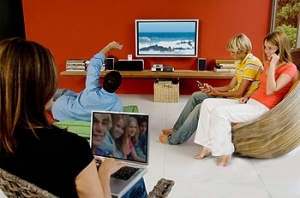
What makes a memorable TV commercial? It’s all about messaging. When a piece of communication is to the point, relevant, worthwhile and compelling – it will move the viewer to action.
Moving people is not magic – it’s all about effective communication. It’s called the 4Cs model, which stands for Comprehension, Connection, Credibility and Contagiousness.
Brands like Dunkin’ Donuts, Suave Shampoo and Breyers Ice Cream use the 4Cs model to develop advertising campaigns that create an emotional connection with their customers.
Use the 4Cs to objectively evaluate your television commercials: what’s working, what isn’t and why.
The First C: Comprehension
Does the audience get the message or main idea of the commercial? What does the commercial instantly communicate? Can the audience play the message back? This confirms that they “get it” and the first C is working. Here are three tips for better comprehension:
1) Make the message sharp and clear
2) Repetition helps
3) Keep it simple – don’t go too deep
The Second C: Connection
Making a connection with your TV commercial means not only that the audience “gets it,” but that it resonates with them, has meaning and significance for them and usually triggers an emotional response.
The Third C: Credibility
The audience needs to believe who is saying it (the brand voice), what is being said, and how it is being said. Otherwise, any connection begins to break down – immediately. Credibilty is the critical C, because the audience may completely understand an advertiser’s message, and even connect with it on an emotional level – but may not buy into it. An example is Buick’s recent failure to attract younger buyers to the brand despite a more youthful image being put forth in its products and advertising. It’s going to take a lot more than some well-produced TV ads to convince people that Buick is more than their grandfather’s car.
The Fourth C: Contagiousness
You want your audience to “catch the message,” run with it, and spread it around. Think of the last time you saw a TV commercial that was so funny or clever that you discussed it with your friends, found yourself reenacting it or repeated the slogan in conversations. That’s contagiousness. To be contagious, your commercial needs to be energetic, new, different and memorable. And most of all, it should motivate the target to do something.
Applying the 4Cs
So now play one of your TV commercials for a few people in your target audience and ask them the following questions:
1) What is the main message?
2) Does it evoke an emotional response?
3) Is the message believable?
4) Do you feel the message will “stick with you” and make you want to react in some way?
I assure you, the answers will be revealing – one way or another.

 Jobs also believed in controlling the message which files in the face of the current wisdom that consumers should tell the brand story via Facebook and Twitter. Upon his death, Apple barely had a presence on either platform.
Jobs also believed in controlling the message which files in the face of the current wisdom that consumers should tell the brand story via Facebook and Twitter. Upon his death, Apple barely had a presence on either platform.


 Posted by tvisnotdead
Posted by tvisnotdead  TV advertising is not going anywhere, just evolving. It’s always been about getting consumers to act, and incorporating the use of today’s smartphone applications is the newest way to bring more
TV advertising is not going anywhere, just evolving. It’s always been about getting consumers to act, and incorporating the use of today’s smartphone applications is the newest way to bring more





